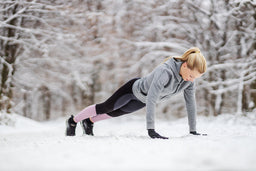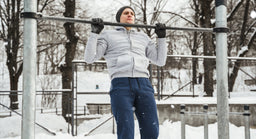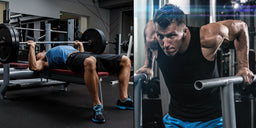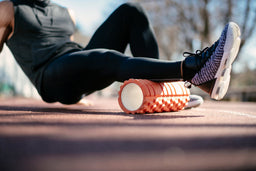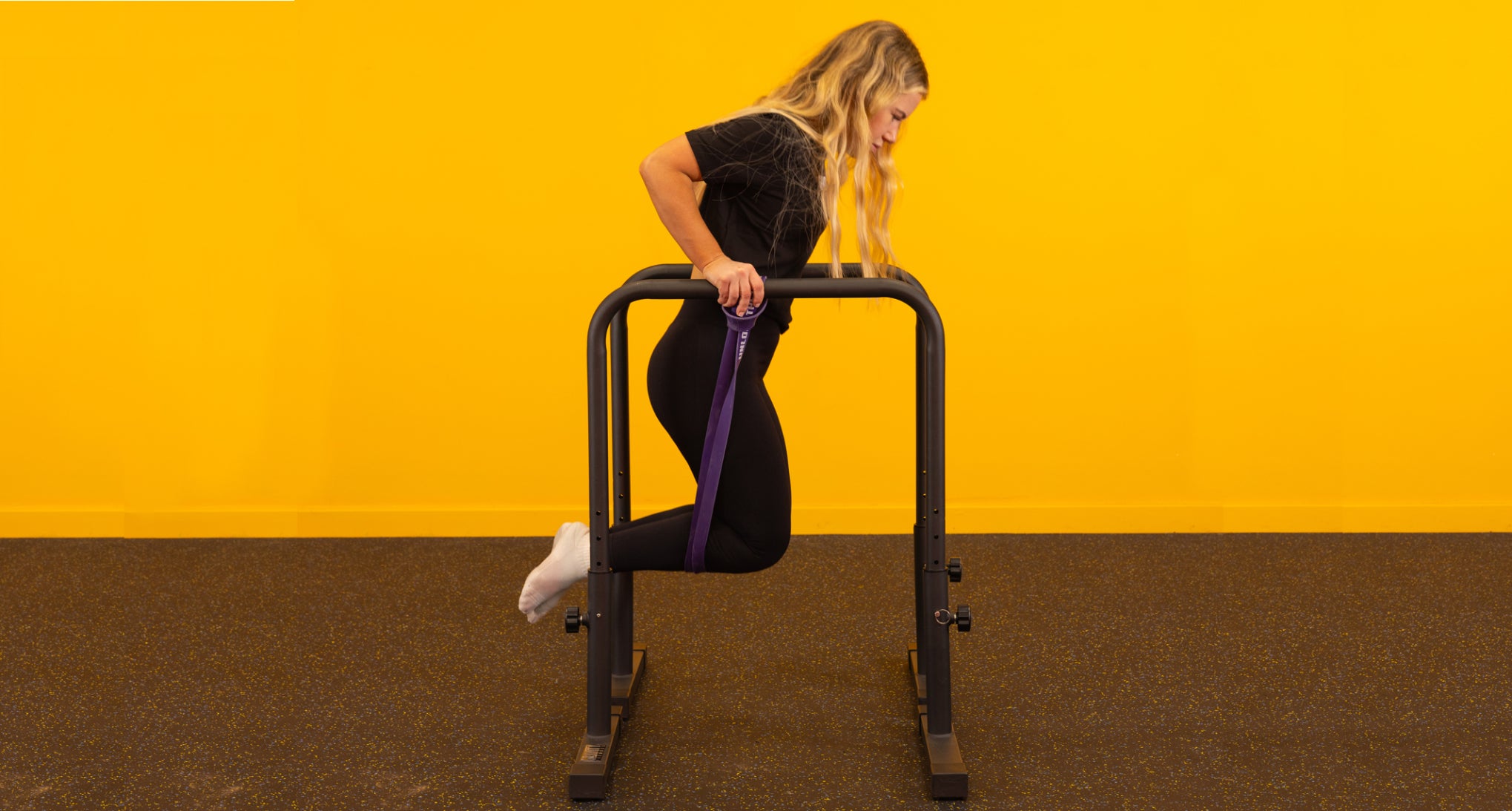
Do you know these FOUR ways to use resistance bands for calisthenics?
Every calisthenics athlete has a set of resistance bands in their gym bag. But can you name the four ways you can use resistance bands to help your calisthenics training? Let’s get into them:
Using resistance bands as an assistance tool for calisthenics
One of the most obvious ways to use resistance bands in calisthenics is as an assistance tool, giving you support for movements that you can’t quite master with full bodyweight. This is really useful for beginners or for when you’re working on mastering more advanced calisthenics exercises.
Example: assisted pull-ups
Pull-ups are a fundamental calisthenics exercise and form the basis of a number of advanced skills. But many people find it difficult to get their first strict pull up. As part of your journey to your first pull up you can use a resistance band to take some of your weight.
Loop a resistance band around the pull-up bar and place one foot or knee into the band. As you get stronger, use lighter bands then remove the assistance altogether.
Resistance bands to add resistance in calisthenics
Calisthenics is essentially the art of mastering your own bodyweight. For this reason, it can be difficult to use the principle of progressive overload (since you won’t be working with weights).
Adding resistance bands to calisthenics exercises will add extra resistance, challenging your muscles, building strength, and moving you past plateaus.
Example: banded push-ups
Making the simple push-up more challenging will build strength that translates into advanced movements like handstands and planche.
Loop a resistance band around your upper back and hold the ends in your hands. As you push up, the band will provide resistance, making the exercise more challenging.
How to use resistance bands for mobility in calisthenics
Every athlete should do mobility work, and calisthenics athletes need it more than most. Calisthenics asks your body to move through different angles, ranges of movement, and movement patterns. Staying mobile is a must.
Resistance bands are light, portable, versatile tools for mobility and flexibility work. You can also use them to warm up before training.
Calisthenics drills and stretches with resistance bands
You can use resistance bands to warm up, strengthen, and mobilise every body part from shoulders and back to hips, hip flexors, glutes and more. Here are some ideas for the shoulder joint and deltoid muscles.
Shoulder mobility:
- use a resistance band for banded pull-aparts (holding the band in both hands and pulling the hands apart at chest height)
- attach a resistance band to an anchor point at shoulder height. Hold the other end with both hands and perform face pulls (for the rear delts)
- stand on one end of the resistance band and hold the other end in the opposite hand. Pull the band up and across the body for banded lateral raises.
How to use resistance bands for support in calisthenics exercises
We’ve talked about the main three ways to use resistance bands in your calisthenics sessions: to give assistance, add resistance, and help with mobility work. But what about support?
Resistance bands can help you maintaining proper form, which will go a long way to preventing injuries as you learn how to do calisthenics the right way.
Example: supported handstand holds
Moving from wall-supported handstands to free-standing can be a leap of faith. If you don’t have a gym buddy to give you a supportive hand, use bands. Loop a thick band between the arms of a squat rack or rig to give yourself a focal point that will support your bodyweight.
Example: band-supported plank
Planks are an amazing exercise for building strength in the core, glutes, and hips. If you struggle to hold a plank, use a resistance band to keep your hips level. Loop the band between two solid anchor points at the right height, then plank over the band. You will feel the band beneath your hips if your body starts to sag.
Are resistance bands good for calisthenics?
Calisthenics is do-anywhere training style that doesn’t need a lot of equipment. But it’s worth adding a ser of resistance bands to your training kit. They can be used in so many ways, and a decent set of bands will last a lifetime. It’s a no-brainer!
4 reasons athletes love resistance bands for calisthenics
Versatility - resistance bands can be used for assistance, resistance, stretching, mobility, and support. They’re good for beginners, advanced athletes, coming back from injury, and training on the go.
Portable – bands are small and lightweight, ideal for the gym, outdoor training, home workouts, or travel.
Scalable - resistance bands come in different strengths so you can adjust the support or resistance as you need.
Inexpensive – resistance bands are pretty cheap, especially when you consider how much you can do with them and how long they’ll last!
Resistance bands online for calisthenics
Our resistance bands are a best-seller for a reason. Available as a pack of four, ranging from red (7-15kg resistance) right up to green (22-56kg resistance). Check them out at the Gravity Fitness store.



























